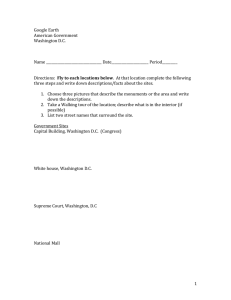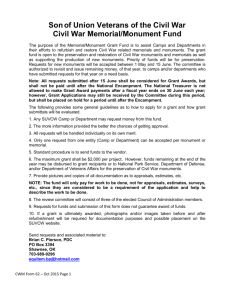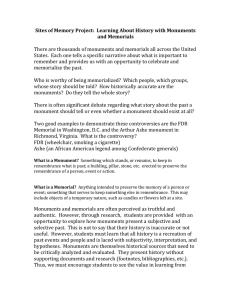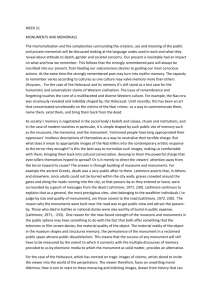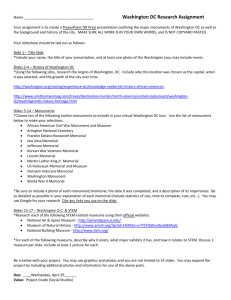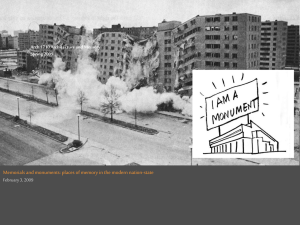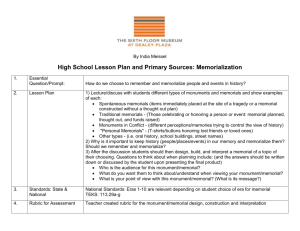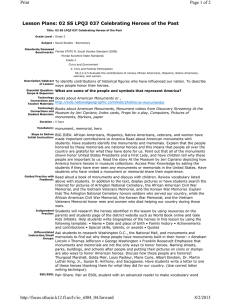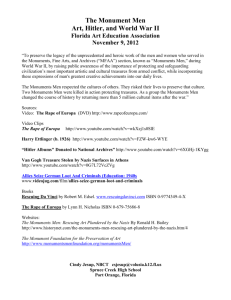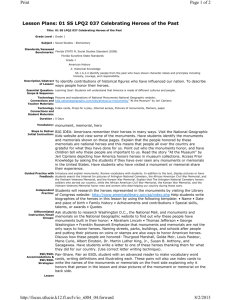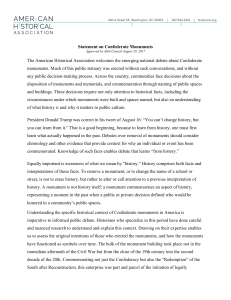The Presence of the Anti
advertisement
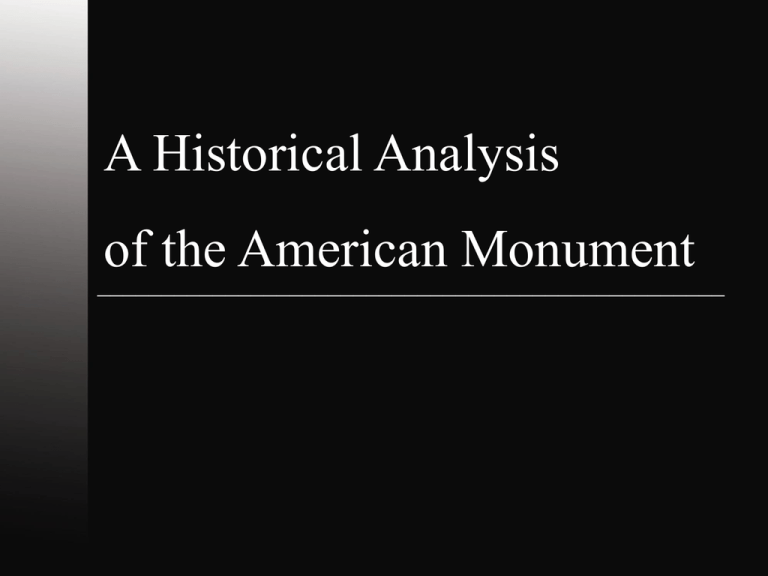
A Historical Analysis of the American Monument _________________________________________________ The Function of Public Space _________________________________________________ - Place for civic rituals - Political space where common cultural values ideas are expressed - The memorial is a key ingredient in the symbolic expression of cultural ideals The Issue of Consensus _________________________________________________ - In a democracy, the consensus needed to endorse a piece of public art is very problematic - Rarely can all constituents ever be pleased - This problem was not faced by other societies with royalty, aristocrats or the church commissioning public art - Today, many past monuments are taken down or renamed due to the presence of dissenting voices that were not heard when the monuments were constructed - In addition, monuments are static entities, but memories or attitudes toward past events change The American Renaissance (1880-World War I) _________________________________________________ -Escalation of public projects, in turn, escalation of public art - Nearly all memorials commemorate figures of national importance - Emergence of civil war memorials - The civil war provided a mythology of heroism, noble leaders and foot soldiers - The dominant style was classical - Many American artists were trained abroad and were indoctrinated into the classical style The Puritan by Augustus Saint Gaudens 1881 The Washington Monument by Robert Mills 1885 The Minute Man by Daniel Chester French 1871-75 Examples of Various Civil War Memorials _________________________________________________ Robert E. Lee J.E.B. Stuart Stonewall Jackson The Source of the Equestrian Statue _________________________________________________ Marcus Aurelius Soldiers’ and Sailors’ Memorial Arch 1889-92 _________________________________________________ The Source: The Triumphal Arch _________________________________________________ The Arch of Constantine The End of the American Renaissance Early 1900s _________________________________________________ -A shift occurred from military memorials to the commemoration of a “traditional”American way of life -Private interests become major patrons, for example, groups like The Daughters of the American Revolution, The Colonial Dames, The Society for the Preservation of New England Antiquities - Such patrons feared new money, immigrants and new values -Historical preservation and even creating replicas of what has already been destroyed become the main ways to memorialize the past Williamsburg _________________________________________________ -A replica of a colonial town with careful editing - Funded by Dr. W.A.R. Goodwin and John D. Rockefeller Other examples of attempts to construct monuments that serve as symbols of European ancestry Leaning Tower of Pisa in Niles, Illinois The Parthenon in Nashville, TN Stonehenge in Maryhill, Washington Built by the railroad magnate Sam Hill as an anti-war memorial The Problem of the Modern Monument after World War II _________________________________________________ -The ambiguity surrounding which modern cultural ideals to express or if any consensus surrounding cultural values exists or ever has?? -The classical style of past monuments was and still is treated with skepticism - For example, the Franklin Delano Roosevelt Memorial Commission in 1955 called for “a less dominant form than the Lincoln, Jefferson and Washington monuments” -Due to controversy, the FDR memorial was not completed until 1997 The Presence of the Anti-Monument _________________________________________________ Claes Oldenburg - sees common cultural values existing in mundane objects and consumer desires not national heroes or ideals which are the focus of the traditional monument The Presence of the Anti-Monument _________________________________________________ The Presence of the Anti-Monument _________________________________________________ The Presence of the Anti-Monument _________________________________________________ The Presence of the Anti-Monument _________________________________________________ The Presence of the Anti-Monument _________________________________________________ The anti-fascist disappearing monument by Jochen & Esther Gerz in Hamburg, Germany It was unveiled in 1986 and vanished in 1993. _________________________________________________ The new language or style of the modern monument?? _________________________________________________ It appears that Minimalism has emerged as an acceptable alternative to classicism. For example . . . The Vietnam Veterans Memorial Oklahoma City Memorial _________________________________________________ Back to Homepage
